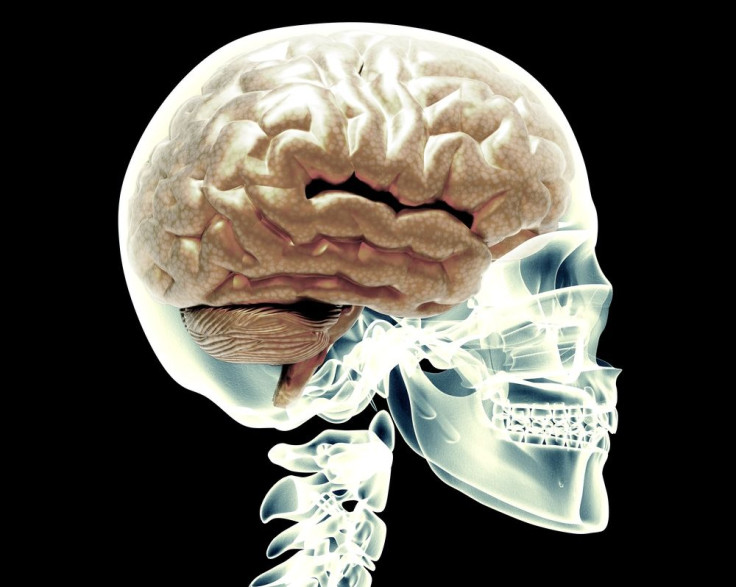Medical No-Brainer: Functional Man With Only Half A Brain Expands Our Understanding Of Neural Plasticity

In 2007, a perfectly healthy 44-year-old man complaining of minor leg weakness baffled doctors in France when a medical exam revealed that most of his brain was missing. Although researchers can explain why he lost his brain, figuring out how he managed to live so long without it is more difficult. However, a recent study may shed light on the man’s survival, proposing that brain size and brain function are largely unrelated.
The middle-aged father of two, whose identity was not revealed for privacy concerns, visited his doctor after suffering with mild weakness in his left leg for two weeks. According to the 2007 study on the bizarre case published in the scientific journal The Lancet, a more thorough medical examination revealed the patient was missing a significant amount of brain matter. Although it was difficult to measure exactly how much of the brain was absent, according to Lionel Feuillet, a co-author of the study, the doctors estimated that the patient was missing between 50 to 75 percent.
“The whole brain was reduced — frontal, parietal, temporal and occipital lobes — on both left and right sides. These regions control motion, sensibility, language, vision, audition, and emotional, and cognitive functions,” Feuillet told New Scientist.
Despite the handicap, the married father of two held a full-time job as a civil servant and showed no other signs of his missing body part other than a slightly below average IQ.
Further Investigation
A further investigation of the patient’s medical history revealed a possible cause for the strange condition. At 6 months old, the patient was diagnosed with postnatal hydrocephalus, New Scientist reported. Hydrocephalus, which is Greek for “water on the head,” is a condition that occurs when fluid build up in the skull and causes the brain to swell. The cause of the patient’s hydrocephalus was listed as unknown, but according to the National Health Institute most cases of postnatal hydrocephalus, or hydrocephalus which occurs after birth, are spurred by infections of the central nervous system, bleeding in the brain caused by injury or during birth, or even tumors.
After his diagnosis, the patient received shunts in his brain to help drain the excess fluid. When untreated, hydrocephalus can cause brain damage and impaired developmental, physical, and intellectual functions. At age 14 the shunts were removed. Unfortunately, according to the study, removing the shunts allowed more fluid to gradually build up in the patient’s brain. Over the next 30 years, this build-up slowly condensed and consumed the actual brain matter until it only remained on the outer areas of the skull, much similar to a shell.
The weakness in the man’s leg subsided after doctors reinserted a shunt into his brain via a procedure known as neuroendoscopic ventriculocisternostomy. While the cause of the patient’s initial concern had been addressed, how he remained fully functional despite missing the majority of his brain remained less clear.
The French patient may be the most extreme case of an individual functioning without a large percentage of his brain, but he is by far not the only example. According to Dr. Donald Forsdyke in his paper recently published in Biological Theory, these examples are proof that the brain size has little correlation with what it’s capable of accomplishing. Because those missing large amounts of their brains are able to function nearly the same as those with full brains, Fosdyke proposes “it would seem timely to look anew at possible ways our brains might store their information.”
Brain Plasticity
Experts believe the concept of brain plasticity may explain how the Frenchman was able to function despite missing so much brain matter. Our brains are made up of different sections designed to undertake specific tasks. For example, the frontal lobe is associated with speech, movement, and problem solving, while the cerebellum is associated with coordination of movement and balance. Brain plasticity, or neuroplasticity, describes how the brain is able to reorganize its neural pathways to allow areas of the brain to undertake other tasks other than those intended.
“If something happens very slowly over quite some time, maybe over decades, the different parts of the brain take up functions that would normally be done by the part that is pushed to the side,” Dr. Max Muenke, a pediatric brain defect specialist at the National Human Genome Research Institute, who was not affiliated with the study, told New Scientist.
Other examples of brain plasticity are found in individuals with hearing loss. Researchers have observed that without auditory stimulation, the area of the brain associated with hearing, the auditory cortex area, adjusts to help the patient enhance their remaining senses. Recent research has also revealed that brain plasticity may play a role in helping the brains of those with autism improve their overall brain function.
Source: Forsdyke DR. Wittgenstein’s Certainty is Uncertain: Brain Scans of Cured Hydrocephalics Challenge Cherished Assumptions. Biological Theory. 2015.
Feuillet L, Defour H, Pelletier J. Brain of a white-collar worker. The Lancet . 2015.
Published by Medicaldaily.com



























